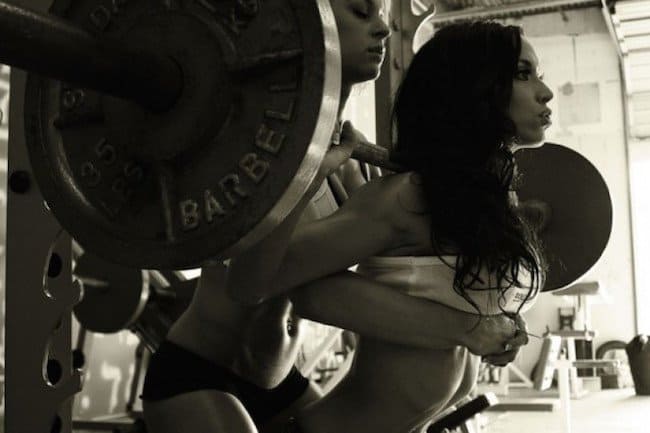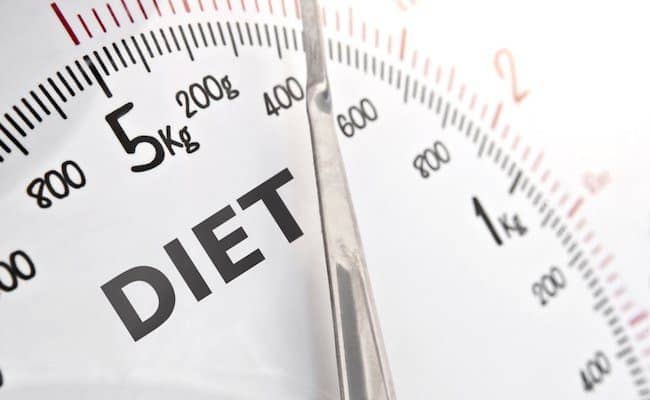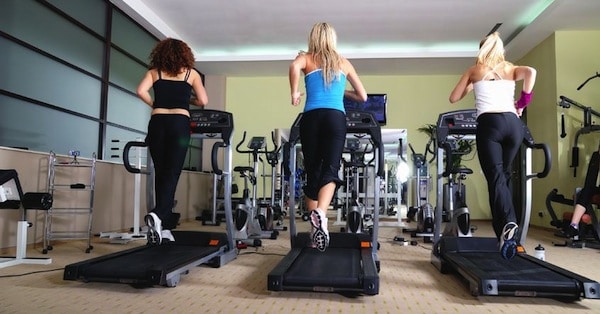
Every individual is unique to how many specific calories they burn in 30 minutes. However, there are some general guidelines to determine which activities will give you more or less calories burned for exercise.
In general, aerobic activities like running, cycling, stair stepping or cross country skiing will burn a high amount of calories compared to exercises that you are stationary, like weight lifting.
How many calories you burn during 30 minutes of exercise – Factors
Body size
If one person weighs 150 pounds (68 kg) and another person weighs 200 pounds (91 kg) and they both cycle for 30 minutes, the 200 pound person will burn more calories than the 150 pound person. That is true for all activities; the larger your body size the higher number of calories you will burn.
This fact is important to take into account during weight loss. As you lose weight, your total calorie amount goes down for exercise. So, what you may have burned in exercise in 30 minutes at your starting weight will be less as your body mass gets lower.
Weight bearing exercise
In general, weight bearing exercise usually has a higher calorie burn than non-weight bearing exercise. Weight bearing exercise means you are supporting your own body weight. Examples of weight bearing exercise includes running, walking, dancing, tennis, etc.
Non-weight bearing exercises include biking or swimming. In biking, the seat is holding your body weight, and the water in swimming is holding your weight. Keep in mind you can still burn as much or greater calories with non-weight bearing exercise compared to weight bearing exercise if your intensity is high enough.
Intensity
Something to consider for calorie burn is the intensity during exercise. The higher the intensity, the greater the calorie burn. Aerobic exercise classes like high intensity interval training (HIIT) classes will have a high calorie burn because most of the time you are exercising at a high intensity with periods of rest in between.
Exercise is considered high intensity when you feel like you are reaching your maximum physical effort. You won’t be able to carry on a conversation during high intensity exercise. You feel about an 8-8.5 on a scale from 1-10, with 10 being your maximum physical effort and 1 laying on the couch.
Moderate intensity means you are still working hard, but you can carry a conversation during exercise. You feel between a 6 or 7 on a scale from 1-10, with 10 being your maximum physical effort and 1 laying on the couch. Moderate exercise actually has a greater percentage fat burn, but overall calorie burn will be lower.
How many muscles are involved?
Another thing to consider is when estimating calorie burn during exercise is how many muscle groups are you engaging. Playing basketball, racquetball, tennis or doing something like tae kwon do involve various muscle groups which increases calorie burn.
Using your arms, core and legs increases calorie burn instead of just using 1 muscle group.
Examples for how many calories for a 155 lb person
Here are some estimates of calorie burn for 30 minutes of exercise compliments of Harvard Health Publications:
General weight lifting: 112 calories
Horseback riding: 149 calories
Walking 3.5 mph: 149 calories
General stair step machine: 223 calories
Vigorous stationary rowing: 260 calories
General elliptical: 335 calories
Step aerobics: 372 calories
Jogging about 10 min/mile pace: 372 calories
Running 9 min/mile pace: 409 calories
If you weigh more than 155 pounds, your calorie burn would be higher than this rate. If you weigh less than 155 pounds, your calorie burn will be lower.
Workout gadgets
There are many electronic fitness applications, watches or other devices you wear that can estimate how many calories you are burning during exercise.
The number it tells you for calories burned will be most accurate if you enter in at least your weight, and maybe even age, gender or height. Just remember if you use one of these gadgets, re-enter in your weight as you lose weight so it will be most accurate.
Caution
When you press “quick start” on a piece of exercise equipment, the calories burned number will not be that accurate because it’s not taking into account your individual body size.
For more accurate assessment, choose manual or a program on a piece of exercise equipment. Enter in your individual information for more accurate calorie burn. Remember when you’re exercising, it’s not always about trying to get the highest calorie burn every time you exercise.
Exercising at a lower intensity can help your body recover and increase fat usage for energy. Listen to your body; if you are too tired to push hard it could mean your muscles need the rest.
Conclusion
There are many factors that determine how many calories you can burn in 30 minutes of exercise. Some of the main factors for calorie burn include body size, exercise intensity, how many muscle groups are involved and if it’s weight bearing. A 155 lb person could burn between a little over 100 calories up to 400-500 calories in 30 minutes.
References used in this article










